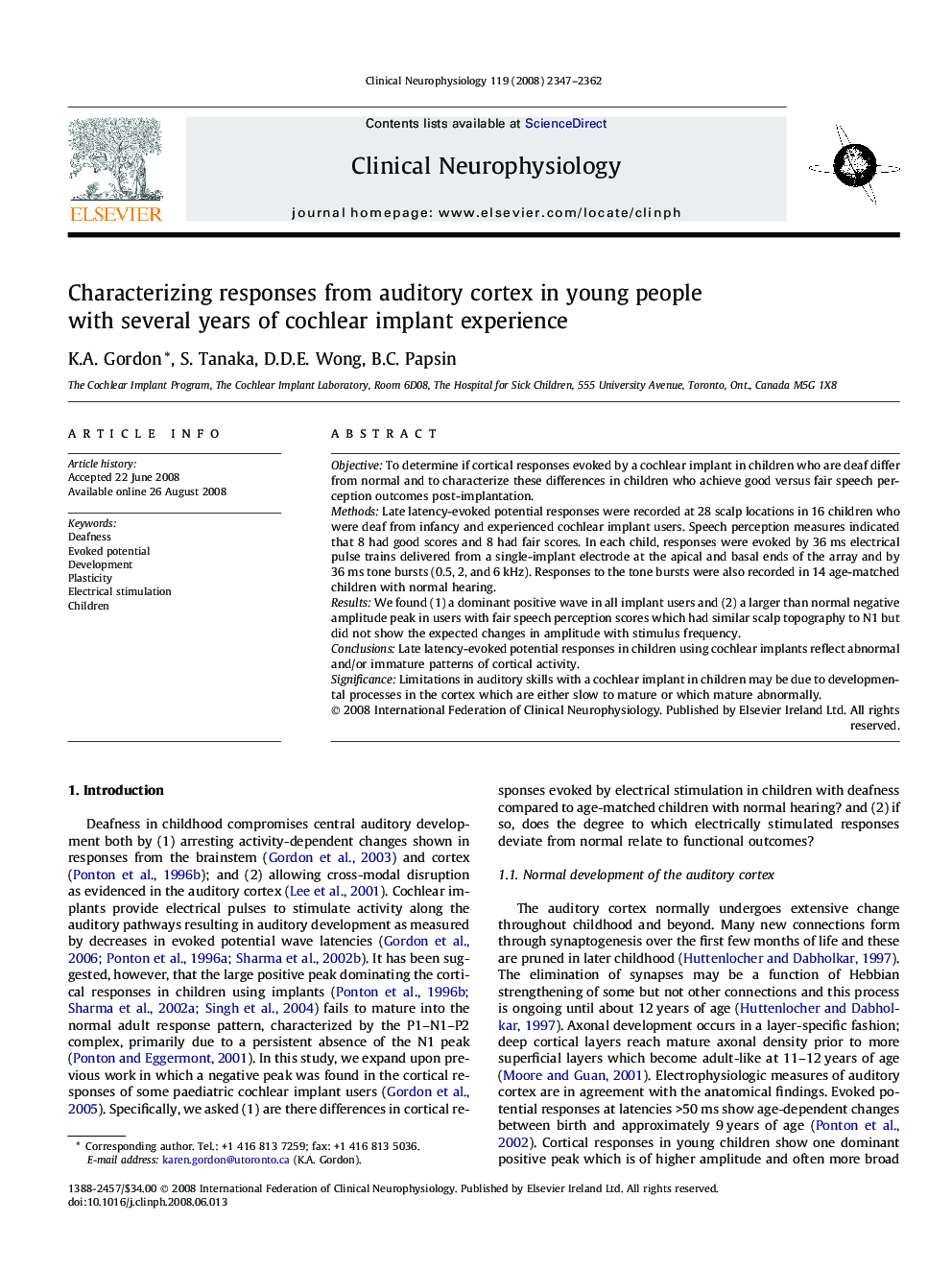| Article ID | Journal | Published Year | Pages | File Type |
|---|---|---|---|---|
| 3046472 | Clinical Neurophysiology | 2008 | 16 Pages |
ObjectiveTo determine if cortical responses evoked by a cochlear implant in children who are deaf differ from normal and to characterize these differences in children who achieve good versus fair speech perception outcomes post-implantation.MethodsLate latency-evoked potential responses were recorded at 28 scalp locations in 16 children who were deaf from infancy and experienced cochlear implant users. Speech perception measures indicated that 8 had good scores and 8 had fair scores. In each child, responses were evoked by 36 ms electrical pulse trains delivered from a single-implant electrode at the apical and basal ends of the array and by 36 ms tone bursts (0.5, 2, and 6 kHz). Responses to the tone bursts were also recorded in 14 age-matched children with normal hearing.ResultsWe found (1) a dominant positive wave in all implant users and (2) a larger than normal negative amplitude peak in users with fair speech perception scores which had similar scalp topography to N1 but did not show the expected changes in amplitude with stimulus frequency.ConclusionsLate latency-evoked potential responses in children using cochlear implants reflect abnormal and/or immature patterns of cortical activity.SignificanceLimitations in auditory skills with a cochlear implant in children may be due to developmental processes in the cortex which are either slow to mature or which mature abnormally.
